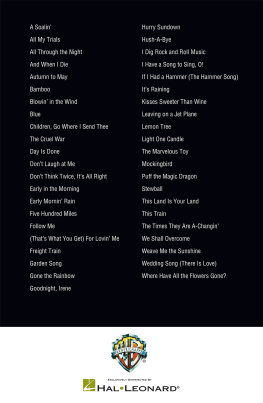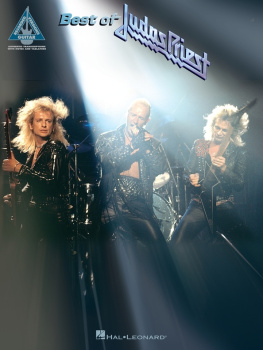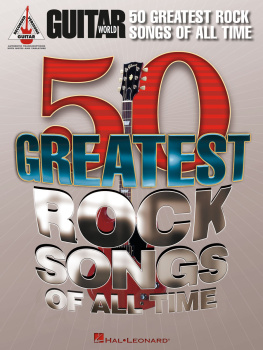Thank you for downloading this Simon & Schuster ebook.
Get a FREE ebook when you join our mailing list. Plus, get updates on new releases, deals, recommended reads, and more from Simon & Schuster. Click below to sign up and see terms and conditions.
CLICK HERE TO SIGN UP
Already a subscriber? Provide your email again so we can register this ebook and send you more of what you like to read. You will continue to receive exclusive offers in your inbox.
To my parents, who gave the gifts of love, writing, and music.
CONTENTS
An if ya listen, youll hear a movin, an a sneakin, an a rustlin, anan a reslessness. Theys stuff goin on that the folks doin it dont know nothin aboutyet. Theys gonna come somepin outa all these folks goin wesouta all their farms lef lonely. Theys comin a thing thats gonna change the whole country.
JOHN STEINBECK, THE GRAPES OF WRATH , 1939
PROLOGUE
SANTA MONICA, 1964
The screams came in waves, hysterical and elated, punctuated by applause. Then the camera found them: five men in matching striped shirts, teetering with nerves, grinning like children. The Beach Boys. A clap on the snare drum sent the song rumbling to life, and the players at the stages front tapped their feet to stay in time. Punches from the drum kit underpinned a sheen of male voices in harmony. But fighting for prominence was another noisea throaty, splattering sonic current.
Curious instruments hung over the striped shoulders of the men in front. Two of the instruments were painted white, with thin bodies and voluptuous curves that suggested spaceships, or amoebae, or the human torso. Behind their players sat cream-colored cabinets the size of refrigerators, massive speakers barely visible inside, components in a new system of noisemaking. These sleek guitars transformed single notes and chords into flows of electrons, while the amplifiers converted those electrons into wild new tonestones that came out piercingly human despite their electric hue.
There was no piano, no saxophone or trumpet, no bandleader, no orchestra. Besides their drums and voices, the Beach Boys wielded just these bloblike guitars, each dependent on electricity, each able to produce ear-piercing quantities of sound, and nearly all bearing the name Fender . Their amplified blare seemed to encourage the shrieks of fans buffeting the stage, their bodies swaying to the thrumming joys of Surfin USA.
When this scene played in American movie theaters just after Christmas 1964, it was a vision of the future. It was part of a filmed rock n roll concertthe very firstthat also showed the Rolling Stones seething and strutting, and James Brown pulling off terpsichorean heroics unlike anything most of the American public had yet seen. The Teenage Awards Music International Show looked like one more entry in a procession of frivolous teen movies, but it arrived with the shock of the new. It was a multiracial assemblage of the days most famous pop stars, captured on film alongside bikini-clad go-go dancers and howling youths. Movie critics mostly sniffed. Adults, unaware of the differences between these numerous young groups, view the combined efforts as fairly monotonous, went a typical assessment. But a new order was establishing itself.
One of its precepts was racial equality, or at least the sincere pursuit of such. It was a celebration that both targeted and was beholden to the American teenager. And it prized music played on electric instruments that gave individual musicians a vast new sonic paletteand volume levelwith which to express themselves.
Only fifteen years earlier, this scene would have been unrecognizable. Popular music had been the domain of dedicated artisans, trained pros in tuxedos who read notes on paper and sat on bandstands in disciplined regiments, led by a big name in a bow tie. Crooners like Bing Crosby acted out songs written for them by others, and sang for adults, not young people. Nearly everyone who joined them on the pop charts had white skin.
But in the boom years after World War II, teenagers had wrested control of the market for pop music, and many lacked their parents racial prejudice. Singers like Chuck Berry and Bo Diddley, and later Marvin Gaye and the Supremes, rose onto charts once ruled by whites. These cultural changes were accelerated by a complementary revolution in the technology of music-making. By the night The T.A.M.I. Show was filmed in 1964, anyone with the right equipment could achieve volumes that would reach hundreds or thousands of onlookers. The new rulers of music could manipulate electric guitars and amps to produce a universe of evocative or alien new sounds.
One company had done more than any other to usher in the technology that was changing listeners aural experiences. One company had made electric guitars into ubiquitous leisure accessories, by supplying cheap, sturdy instruments to amateurs and professionals alike. This firm was the first in its industry to align itself with the tastes of young people, among the first to paint guitars bright red and later metal-flake blue and purple, first to give its models sexy monikers like the Stratocaster and the Jaguar.
Competitors had long mocked the creations of the Fender Electric Instrument Company, but this Southern California upstart had an asset unlike any othera self-taught tinkerer whose modesty was utterly at odds with the brash characters who used his tools. Clad in perpetually drab workmens clothes, preferring to spend most of his waking hours designing and building in his lab, Clarence Leo Fender toiled endlessly to perfect the tools that ushered in pop musics electric revolution, yet he couldnt play a single instrument himself. Instead, he trusted musicians, whom he loved, to tell him what they wanted. In the waning days of World War II, Leo Fender had started building guitars and amplifiers in the back of his radio repair shop. By that night in 1964, the company hed built dominated the burgeoning market for electric instruments.
At least, for the moment.
Showing off their striped, short-sleeve shirts, the Beach Boys appeared clean-cut and respectable, apparently (if not actually) innocent young men. To close out The T.A.M.I. Show , a quintet of Brits arrived wearing modish dark suits and expressions of bemused insouciance, even outright hostility. The lead singers dark hair fell in curls down to his collar as he prowled the stage, thick lips pressed up against the microphone, hunting and taunting his young quarry. To his left, a craggy-faced guitarist beat on an unfamiliar instrument. That small, solid-bodied guitar responded with snarls and growls, a thick, surging sound that couldnt have been more different from the thin rays of light that had emanated from the Beach Boys Fenders.
The earlier act embodied rock n roll life as a teen idyll, a carefree jaunt in which sex was mentioned only euphemistically, and hardly ever as a source of conflict. Minutes later, the Rolling Stones made rock into a carnal fantasy, a dim mlange of ego and lust, betrayal and satisfaction. Already labeled rock n rolls bad boys, the five young Brits embraced the role in performance and offstage, viewing the Beach Boysanother band of white men using electric guitars to play music first created by black menas entrants in a completely different competition.
Next page







